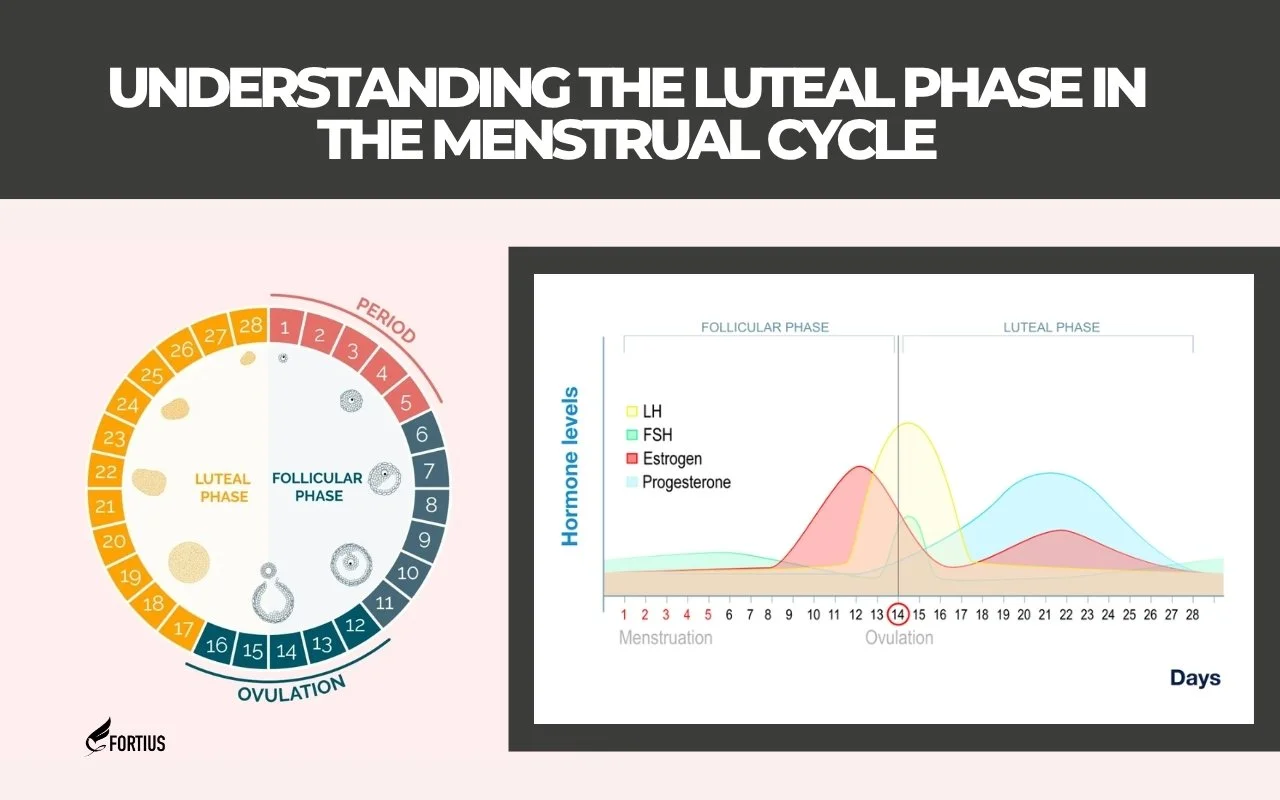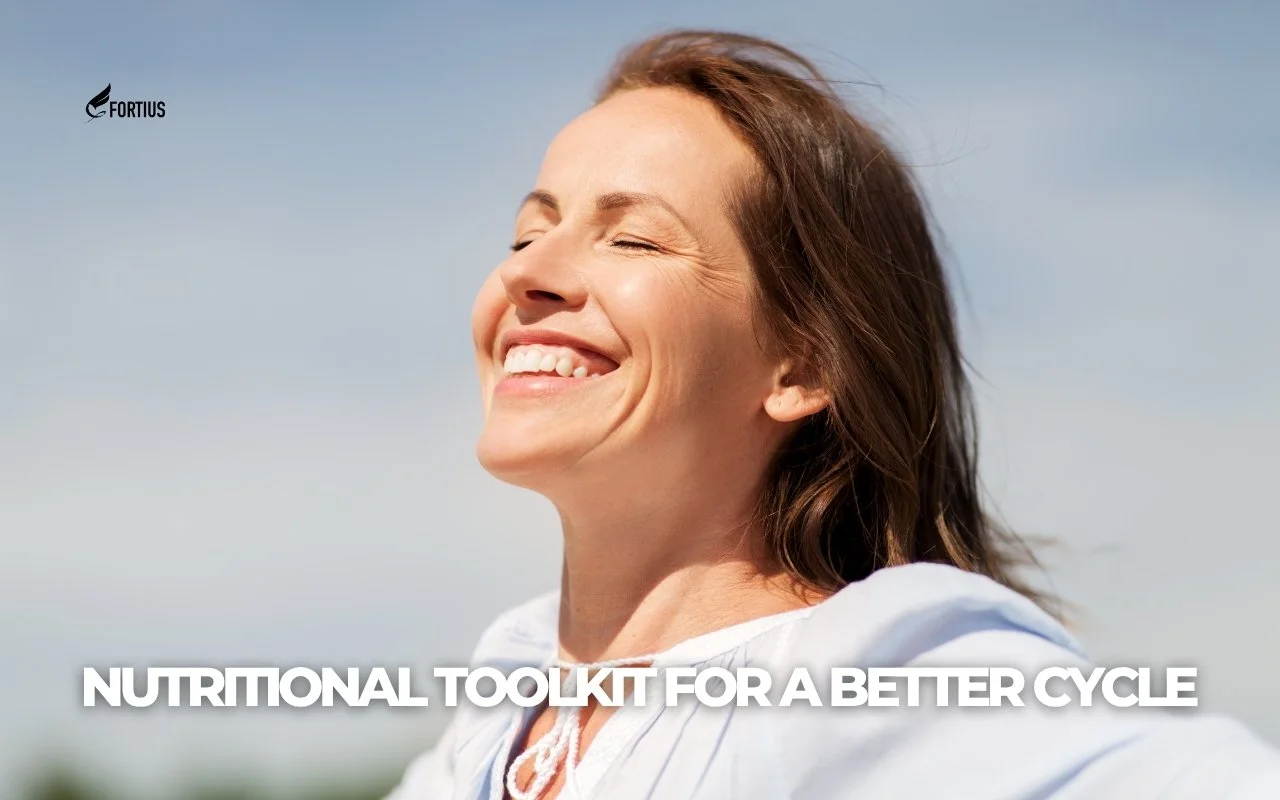Beat the Cravings: A Nutritionist's Guide to Managing PMS Symptoms with Food
For many women, the week or two leading up to their menstrual period can feel like a battle against their own body. The sudden onset of intense food cravings, debilitating mood swings, breast tenderness, and frustrating fluid retention are just some of the common symptoms of premenstrual syndrome (PMS).
These physical and emotional symptoms aren't a sign of weakness; they are a direct result of the complex hormonal shifts happening during your menstrual cycle.
The good news is that you are not powerless. While we can't stop the cycle, we can significantly influence how we experience it. One of the most powerful tools at your disposal is nutrition. By understanding what your body needs during this phase, you can create a PMS diet that works with your hormones, not against them, helping you to reduce PMS symptoms and feel in control.
Understanding the Luteal Phase: Why PMS Happens
Most PMS symptoms occur during the luteal phase of your cycle (the ~14 days after ovulation). During this time, estrogen levels fall while progesterone rises. This hormonal imbalance can affect neurotransmitters like serotonin (which impacts your mood) and can lead to unstable blood sugar, triggering intense cravings for sugary foods.
Our goal with nutrition is to support the body through these shifts, focusing on foods that reduce inflammation, stabilize hormone levels, and provide essential nutrients.
Your Nutritional Toolkit for a Better Cycle
Instead of fighting your body, let's give it the fuel it needs to navigate the luteal phase smoothly.
1. Stabilize Your Blood Sugar with Complex Carbs & Lean Protein Wildly fluctuating blood sugar is a primary driver of mood swings and cravings.
Complex Carbohydrates: Swap out white, refined carbs for whole grains like oats, brown rice, and quinoa. These break down slowly, providing sustained energy and preventing the crashes that lead you to seek out processed foods.
Lean Proteins: Including a source of protein (chicken, oily fish, eggs, lentils) with every meal is crucial for satiety and blood sugar regulation. It keeps you feeling full and minimizes cravings.
2. Fight Inflammation with Healthy Fats Menstrual cramps and period pain are often linked to inflammation caused by chemicals called prostaglandins. We can combat this with healthy fats.
Omega-3 Fatty Acids: These are powerful anti-inflammatories. The best sources are fatty fish, salmon and mackerel. You can also find them in plant-based sources like chia seeds, flaxseeds, and walnuts.
Healthy Monounsaturated Fats: Incorporate sources like olive oil, avocados, and nuts.
What to Limit: Reduce your intake of saturated fats found in processed foods and fatty cuts of meat, as they can worsen pms symptoms.
3. Boost Mood & Reduce Bloating with Key Micronutrients Certain essential minerals and vitamins can make a significant difference in how you feel.
Magnesium: This mineral is a powerhouse for muscle relaxation, which can help ease uterine contractionsand menstrual cramps. It's also vital for mood regulation. Find it in magnesium-rich foods like leafy green vegetables (spinach, kale), almonds, pumpkin seeds, and dark chocolate.
B Vitamins: Specifically B6, which plays a role in serotonin production. A lack of serotonin can contribute to feelings of depression and anxiety. Find B vitamins in eggs, salmon, and leafy greens.
Calcium & Vitamin D: This duo is not just for bone health; studies suggest that adequate intake can help reduce the severity of emotional symptoms and physical discomfort.
4. Address Lifestyle Factors: What to Limit Sometimes, what you don't consume is as important as what you do.
Caffeine: High coffee intake can increase anxiety, disrupt sleep, and may worsen breast tenderness in some women. Try to reduce your intake during the luteal phase.
Alcohol: It's tempting to reach for a glass of wine when you're feeling down, but it's best to avoid alcohol. It can disrupt sleep, worsen mood swings, and negatively impact your hormonal levels.
Salt: High salt intake is a major contributor to fluid retention and bloating. Be mindful of processed and packaged foods, which are often the biggest culprits.
A Sample "PMS-Fighting" Day of Eating
Breakfast: A bowl of oatmeal (complex carbs) made with milk (calcium), topped with chia seeds (omega-3s) and a handful of almonds (magnesium).
Lunch: A large salad with plenty of green leafy vegetables, topped with grilled salmon (oily fish for omega-3s and protein), and a light olive oil vinaigrette.
Snack: A square of dark chocolate (70% or higher for magnesium) and a piece of fruit.
Dinner: Chicken and vegetable stir-fry with brown rice.
Conclusion: Take Control of Your Cycle
You don't have to be a victim of your menstrual cycle. By making these strategic nutritional changes, you can provide your body with the support it needs to navigate hormonal fluctuations, effectively reduce PMS symptoms, and feel more like yourself all month long.
These principles are a key part of a holistic approach to female health. For a broader understanding of how to align both your training and nutrition with your cycle, we recommend reading our foundational guide, The Fortius Method for Women: How to Train and Eat for Your Hormonal Cycle.
If you're ready for personalized guidance from a nutritional therapist or coach, book your free consultation with a Fortius expert today.






